The Big Bang produced the Universe’s hydrogen, helium, and a little lithium. Since then, it’s been up to stars (for the most part) to forge the rest of the elements, including the matter that you and I are made of. Stars are the nuclear forges responsible for creating most of the elements. But when it comes to lithium, there’s some uncertainty.
A new study shows where much of the lithium in our Solar System and our galaxy comes from: a type of stellar explosion called classical novae.
Lithium (Li) is the third element in the periodic table, with an atomic weight of 6.94. It isn’t as plentiful as you’d expect, due to its relative nuclear instability, and it bucks the trend of elements being more abundant the lighter they are: it’s less abundant in the Solar System than 25 of the first 32 elements in the periodic table.
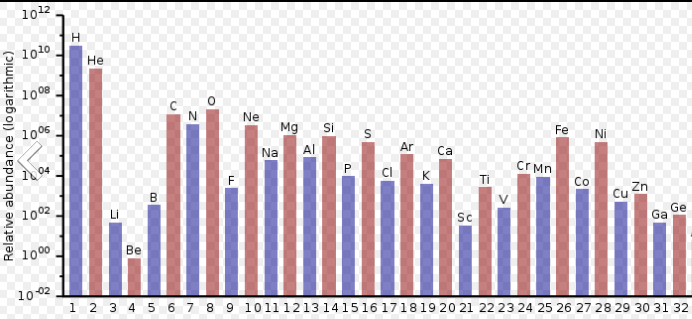
Lithium has a wide range of uses. It’s used in medicines, optics, glass and ceramics, lubricating greases, and even in weapons. And then there are the ubiquitous lithium-ion batteries that power all kinds of devices and tools.
In a periodic table that shows the sources of the elements in the Universe, lithium stands out as the only element that is created through three different processes: Big Bang nucleosynthesis, cosmic ray fission, and low-mass stars like our Sun, when they reach the end of their lives.
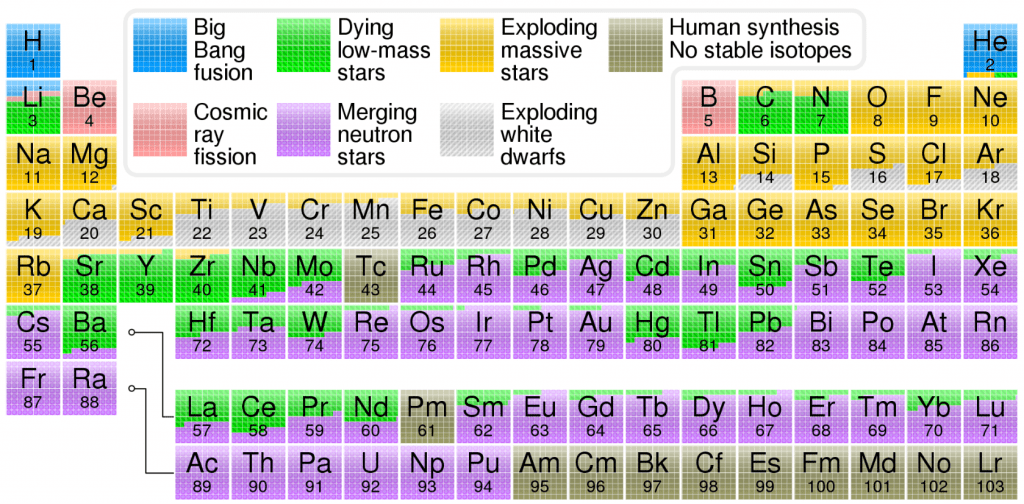
This new study shows that classical novae have produced most of the lithium in our Solar System, and in the Milky Way.
The study is titled “Carbon–Oxygen Classical Novae Are Galactic 7Li Producers as well as Potential Supernova Ia Progenitors.” The lead author is Sumner Starrfield, Professor with ASU’s School of Earth and Space Exploration. The study is published in The Astrophysical Journal.
“Given the importance of lithium to common uses like heat-resistant glass and ceramics, lithium batteries and lithium-ion batteries, and mood altering chemicals; it is nice to know where this element comes from,” said Starrfield, who is a Regents Professor with ASU’s School of Earth and Space Exploration and a Fellow of the American Astronomical Society. “And improving our understanding of the sources of the elements out of which our bodies and the solar system are made is important.”
The team of researchers looked at what are known as classical novae (CN). In a CN, a white dwarf is in a binary pair with a larger star. The white dwarf (WD) is a stellar remnant, a star that has ceased fusion, and shines only with the light of stored thermal energy. A WD usually has about the same mass as our Sun, but its volume is similar to Earth’s.
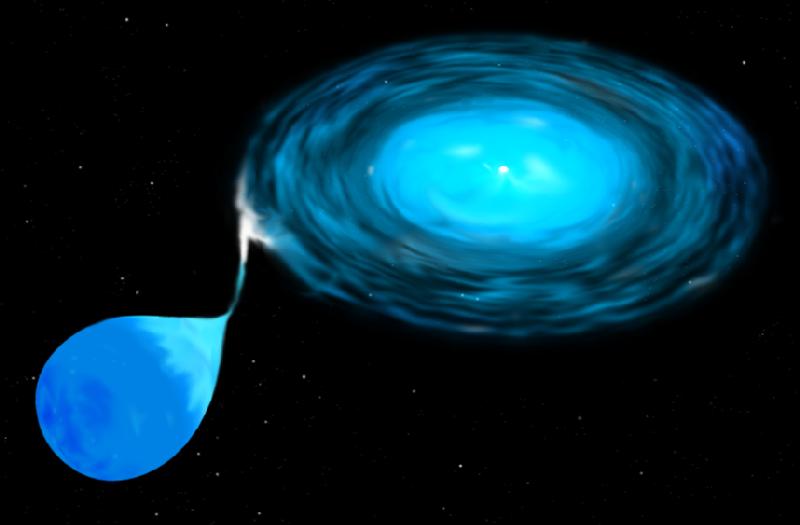
The WD’s immense gravitational force pulls material from its companion star. As that material builds up on the surface of the WD, it also mixes with material from the WD itself, forming a nice explosive blanket of mostly hydrogen. Eventually this causes a thermonuclear runaway (TNR). Runaway hydrogen fusion occurs on the WD’s surface, and a classical nova explosion results.
That explosion sends a massive amount of material off into space, and the WD flares brightly, increasing its luminosity by a factor of up to 50,000. But unlike a “regular” supernova, the classical nova destroys neither the WD nor the companion star. Both are left intact, and the process repeats itself. Astronomers say there are about 50 of these classical novae in the Milky Way every year.
But white dwarfs aren’t monolithic. Their mass can range from as low as 0.17 solar masses to as high as 1.33 solar masses, with a peak between 0.5 and 0.7 solar masses. They also vary in terms of how much material they accrete from their companion prior to going nova, and how much of their own material is mixed with it.
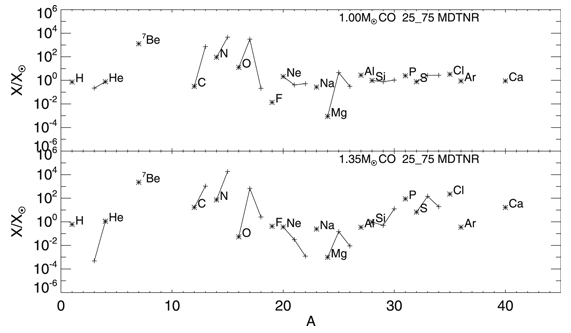
The team modelled WDs of different masses, and they changed the ratio of WD material to stellar companion material. And this is where the Li and Beryllium (Be) comes in.
“Our ability to model where stars get their energy depends on understanding nuclear fusion where light nuclei are fused to heavier nuclei and release energy,” Starrfield said in a press release. “We needed to know under what stellar conditions we can expect the nuclei to interact and what the products of their interaction are.”
The team’s modelling showed that these classical novae can produce large amounts of Be7 in the ejected gases. And Be7 has a short half-life; only about 53 days. Then it decays into Li7, the most abundant of only two stable Li isotopes. According to this research, most of the lithium in our Solar System and the Milky Way came from ancient classical novae.
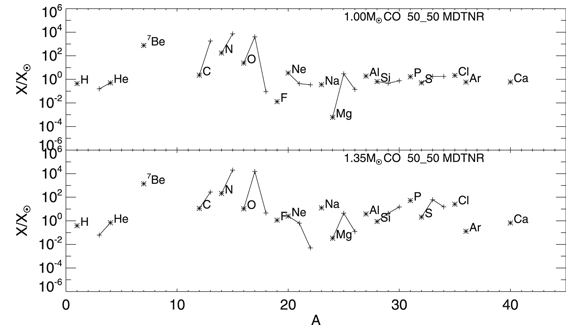
“Our past studies have indicated that a small fraction of stardust in meteorites formed in novae,” said study co-author Maitrayee Bose. “So the valuable input from that work was that nova outbursts contributed to the molecular cloud that formed our solar system.”
But that’s not the only interesting result of their work.
When a white dwarf explodes as a classical nova, not all of the mass it accreted from its companion star is destroyed or expulsed in the explosion. Over time, some WDs actually become more massive through successive cycles of accretion-explosion. It’s possible that some of these WDs can reach the Chandrasekhar limit, and they can become Type 1A Supernovae. But how many?
Their simulations draw a connection between what happens to the accreted material on the WD and whether or not a WD can grow to become a Type 1A supernova.
If the WD accretes enough material from its companion without mixing it with its own material, that allows the WD to accrete more material prior to becoming a classical nova explosion. Also, if the WD accretes material with no mixing, or if the material mixes too early, the the resulting nova explosion doesn’t eject very much material. In these conditions, the WD can grow massive enough to eventually become a supernova.
The study dives even deeper than this, simulating the ratios of material from the WD and from the companion as it gathers on the surface of the WD. While in many cases, different ratios allowed the WD to grow in size during successive nova outbursts, 50%-50% ratios of WD and companion material resulted in novae with higher peak temperatures, and with more massive ejecta moving at higher velocities.
“This is ongoing research in both theory and observations,” Starrfield said. “While we continue to work on theories, we’re looking forward to when we can use NASA’s James Webb Space Telescope and the Nancy Grace Roman Telescope to observe novae and learn more about the origins of our universe.”
Supernovae are complex phenomenon. Type 1A supernovae can arise in different situations, and there are different types. As the authors mention in their paper, there’s still debate about the progenitors for Type 1As. In the conclusion of this study, the authors also point out that there is still much we don’t know about the population of SN 1As. But if their results are correct, we at least know that classical novae are one way they can be produced, and we know some of the detail behind it.
And now we also know where all the lithium came from.

